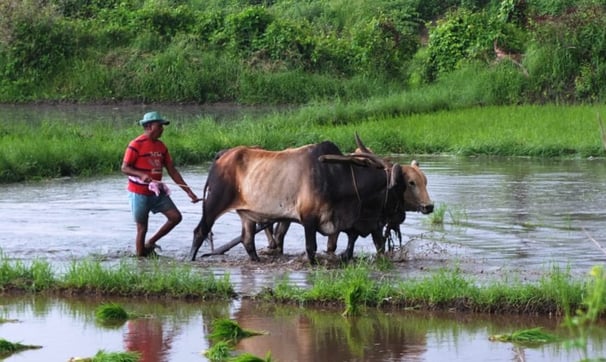Farming Tradition in Goa
COMMUNITY


From Paddy Fields to Spice Groves: Unearthing Goa's Rich Farming Traditions
Beyond the sun-kissed beaches and vibrant nightlife, Goa boasts a rich agricultural heritage, deeply intertwined with its cultural identity. Farming traditions, passed down through generations, have shaped the landscape and sustained communities for centuries. Let's delve into the heart of Goa's agricultural tapestry.
Paddy Fields: The Lifeblood of Rural Goa:
Paddy cultivation, the backbone of Goan agriculture, has shaped the rural landscape for centuries. The sight of lush green paddy fields stretching across the countryside is a testament to the hard work and dedication of Goan farmers. The traditional methods of rice cultivation, adapted to the region's unique climate and topography, are a testament to their ingenuity.
The monsoon season transforms the fields into a vibrant green carpet, while the harvest season brings a golden hue, marking a time of celebration and abundance. The rice grown in Goa, often the local varieties, is known for its distinct flavor and quality, forming the staple diet of the region.
Spice Groves: Aromatic Treasures of the Hinterland:
Goa's hinterland is a treasure trove of spice plantations, where aromatic spices like cardamom, cloves, cinnamon, and nutmeg thrive. These spice groves, often nestled amidst lush greenery, offer a glimpse into the region's rich botanical diversity.
The cultivation of spices has a long history in Goa, dating back to the spice trade era. Farmers carefully tend to their spice gardens, using traditional methods to ensure the quality and flavor of their produce. These spices not only add flavor to Goan cuisine but also play a vital role in traditional medicine.
Coconut and Cashew: The Coastal Bounty:
Along the coastal belt, coconut and cashew trees dominate the landscape. Coconuts, a versatile fruit, are used in countless ways, from cooking to crafting. Cashew cultivation, introduced by the Portuguese, has become an integral part of Goan agriculture.
The cashew apple, fermented and distilled, yields the famous Goan feni, a local spirit. The cashew nuts, roasted and salted, are a popular snack. The coconut tree, revered for its versatility, provides everything from tender coconut water to coir, used in various crafts.
Traditional Farming Practices:
Goan farmers have long relied on sustainable farming practices, adapted to the region's unique ecosystem. Traditional methods like crop rotation, natural fertilizers, and water conservation techniques have helped maintain soil fertility and protect the environment.
The use of traditional farming tools and techniques, passed down through generations, is still prevalent in many rural communities. This connection to the land and the respect for nature are integral to Goan farming traditions.
Challenges and the Future:
Modernization and urbanization have brought challenges to Goan agriculture. Land conversion for development, labor shortages, and changing weather patterns are some of the issues facing farmers. However, there's a growing movement to promote sustainable agriculture, organic farming, and agritourism, aiming to preserve Goa's rich farming traditions and ensure its future.
Experiencing Goa's Farming Heritage:
Visitors to Goa can experience the region's rich farming heritage by:
Visiting spice plantations: Take a tour of a spice garden and learn about the cultivation and uses of various spices.
Exploring paddy fields: Take a walk through the paddy fields and witness the traditional methods of rice cultivation.
Sampling local produce: Visit local markets and farms to taste fresh fruits, vegetables, and spices.
Participating in farm stays: Experience rural life firsthand by staying at a farm and participating in daily activities.
Goa's farming traditions are an integral part of its cultural identity, offering a glimpse into the region's rich history and its deep connection to the land. By supporting local farmers and promoting sustainable agriculture, we can help preserve this valuable heritage for future generations.
